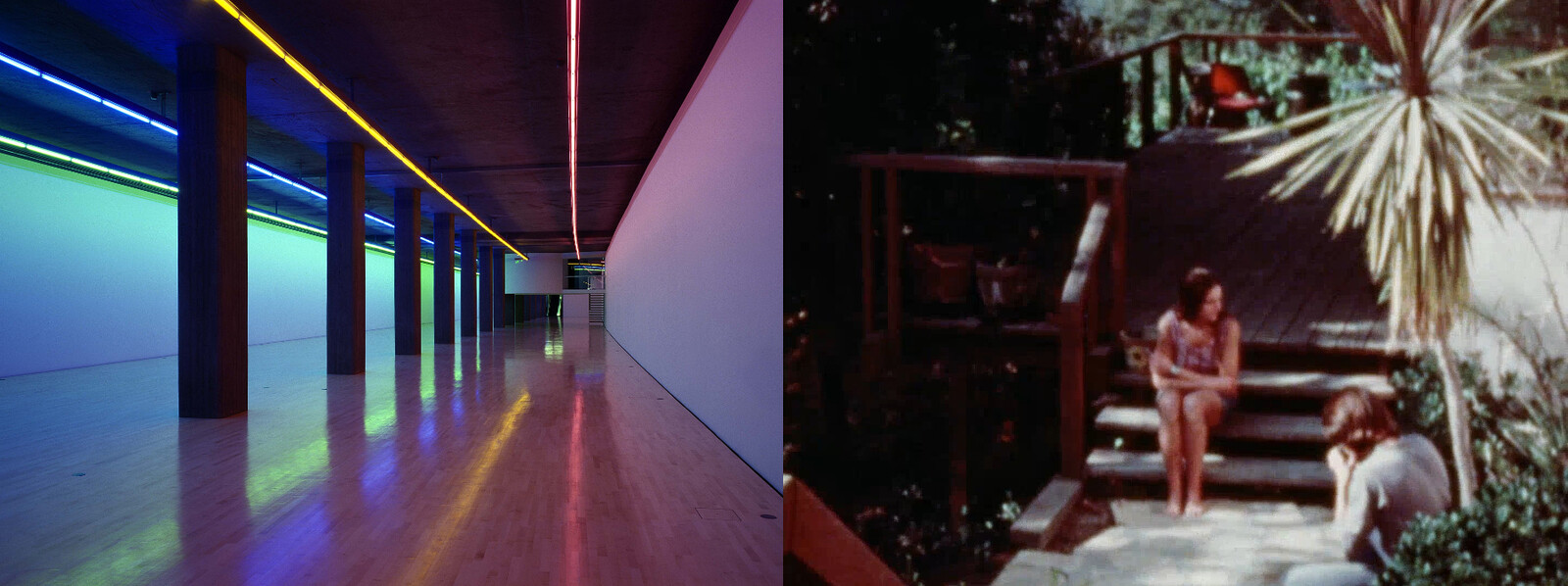Marcia Hafif: Films (1970-1999)
July 17–September 30, 2018
Luisenstraße 33
80333 Munich
Germany
Hours: Tuesday–Sunday 10am–6pm,
Thursday 10am–8pm
T +49 89 23396933
F +49 89 23332003
lenbachhaus@muenchen.de
The Kunstbau, a subterranean exhibition wing of the Lenbachhaus, opened in 1994. For the inaugural exhibition, Dan Flavin (1933–96) created the installation Untitled (for Ksenija). His longtime friends and patrons Heiner Friedrich and Philippa de Menil donated the work to the Lenbachhaus in memory of their parents, Harald and Erika Friedrich and John and Dominique de Menil. In the 1960s and 1970s, the Galerie Heiner Friedrich emerged as one of the world’s leading avant-garde galleries. Friedrich’s initiative as a co-founder of the Dia Art Foundation, which, since 1977, has realized permanent art installations of unprecedented dimensions, have made him a key figure in the history of 20th century art. In celebration of his 80th birthday, the museum is bringing Untitled (for Ksenija) back to the Kunstbau.
Flavin was a leading protagonist of minimalism, a movement in visual art defined by the radical reduction of the formal repertoire to simple geometric structures. At the Kunstbau, he used the four lighting tracks running along the ceiling to install green, blue, yellow, and pink fluorescent tubes. The illumination produces a subtle play of projections of color on the gallery’s floor, walls, and other architectural elements—but also on the visitors’ bodies. Space and light are fused in an experience that shifts as the viewer strolls through the gallery. Without obscuring the architecture, Flavin’s installation engenders new accents and lets us perceive the space in novel ways.
As an exhibition within the exhibition, films by Marcia Hafif are screened in the Kunstbau’s media room. Both artists were active in 1970s New York, where their work was informed by some of the sharpest minds in contemporary art criticism. Flavin abandoned painting and declared that this break was the formative moment of his creative production; for Hafif, by contrast, painting was the constant in her art, a source of continuity as she branched out into other media.
Marcia Hafif: Films (1970–1999) turns the spotlight on a lesser-known aspect of her oeuvre: film and language. After living and working in Rome for several years in the 1960s, the painter returned to her native California, where she made friends in Los Angeles’s experimental arts scene. Exchanging ideas with artists including Robert Irwin, Nancy Buchanan, Chris Burden, and Barbara T. Smith, she created sound installations, continued the exploration of photography she had begun in Rome, and shot short sequences on film. Inspired by directors such as Michelangelo Antonioni and Jean-Luc Godard, Hafif then increasingly devoted herself to moving images and produced her two longest works on film: Notes on Bob and Nancy (1970–77) and India Time (1978).
Throughout her career as an artist, Hafif also worked on her creative writing. The medium of film allowed her to intertwine her writing and her visual art in an innovative way: many of her films are accompanied by her own texts, which, read by an off-screen voice, form a kind of commentary. This device turns the films into audiovisual essays in which Hafif addresses themes such as escapism and female self-determination—issues that have lost none of their relevance today.
With Marcia Hafif: Films (1970–1999), the Lenbachhaus screens an extensive selection of films the artist created in California, India, and New York, often working on a project for several years. The first dedicated presentation of Hafif’s work on film in Germany offers an important correction to the general perception of the artist as a painter of monochromes, a categorization she repeatedly objected to. Far from being a contradiction, it turns out, the coexistence of filmic narration and painterly minimalism in her Œuvre speaks to an open-minded creative approach that is characteristic of the American art of the 1970s with its scrutinizing reflection on its media.
Curated by Sebastian Schneider



